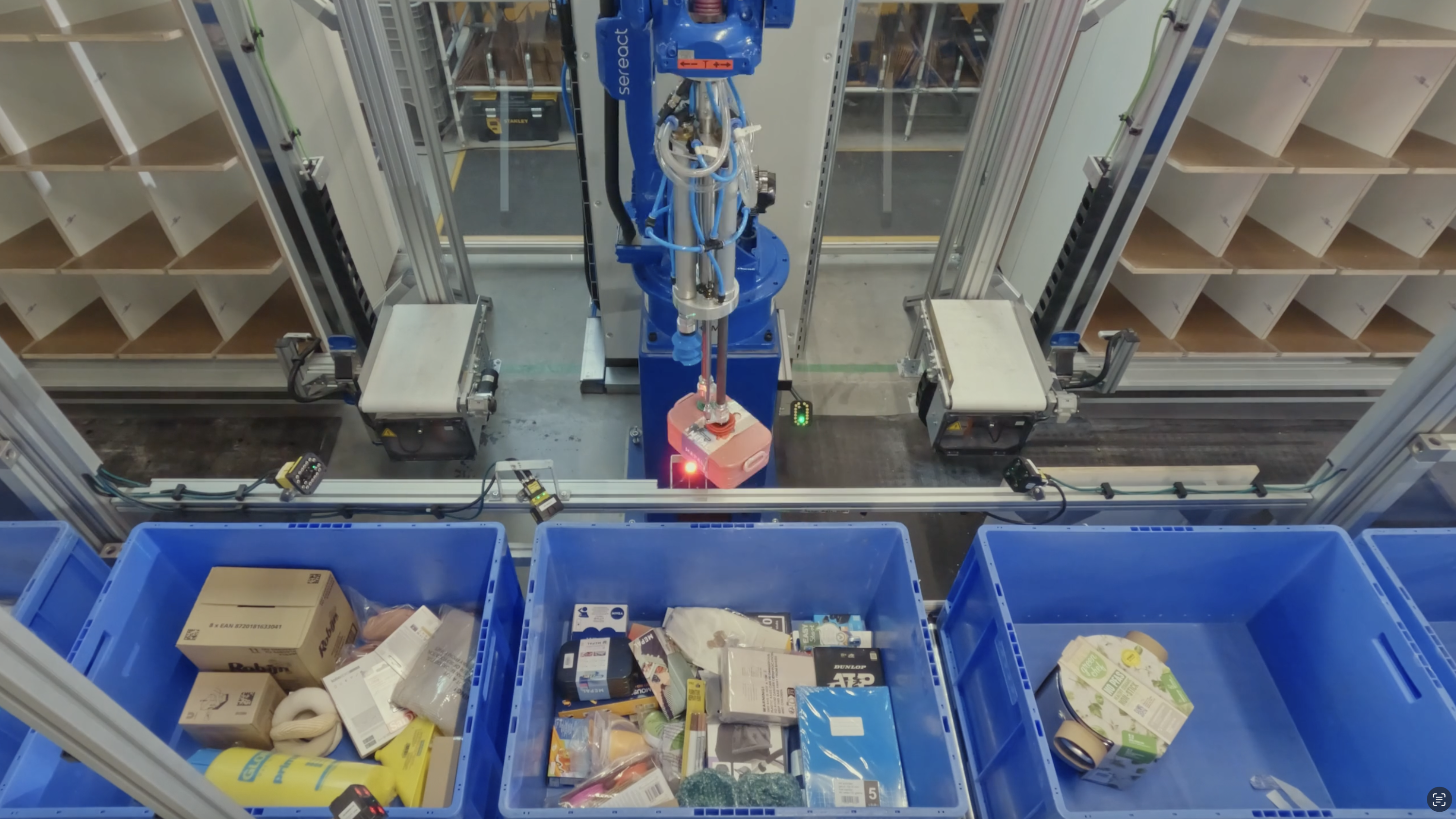Induction
Automated induction onto sorters, auto-baggers and AMRs
In a warehouse, induction is the process of integrating new inventory into the system. This includes picking, scanning, and accurately placing items in the target locations. Efficient induction improves inventory accuracy and streamlines warehouse operations.

Integrate new inventory. Induction is used to scan, label, and place new inventory items into the target storage locations within the warehouse management system, ensuring accurate inventory records.
Automate sorting processes. Induction automates the placement of items on unit sorters, pocket sorters, and autonomous mobile robots (AMRs), streamlining the sortation and distribution process.
Improve packing efficiency. Induction can automate the feeding of items into auto-baggers and other packaging machines, increasing the speed and efficiency of the packaging process.
Increased performance
Induction is a critical process in warehouse logistics that enhances the efficiency and accuracy of inventory management. Below are some of the major applications of induction in warehouses:
E-commerce. Efficiently manage the high volume of orders and returns, ensuring fast and accurate fulfillment to meet customer expectations.
Third-party logistics (3PL). Streamline the handling of multiple customer inventories, improving cycle times and operational efficiency.
Manufacturing. Improve the internal logistics of component handling, ensuring timely delivery to production lines and reducing downtime.
Explore the benefits
Productive 24/7
Runs night and day, even in peak seasons and times of crisis.
No training required
Ready to use from day one and intuitive instruction.
Deployment in one day
Plug & Play system, that seamlessly integrates into your processes.
Contact us
Supercharge your warehouse automation

